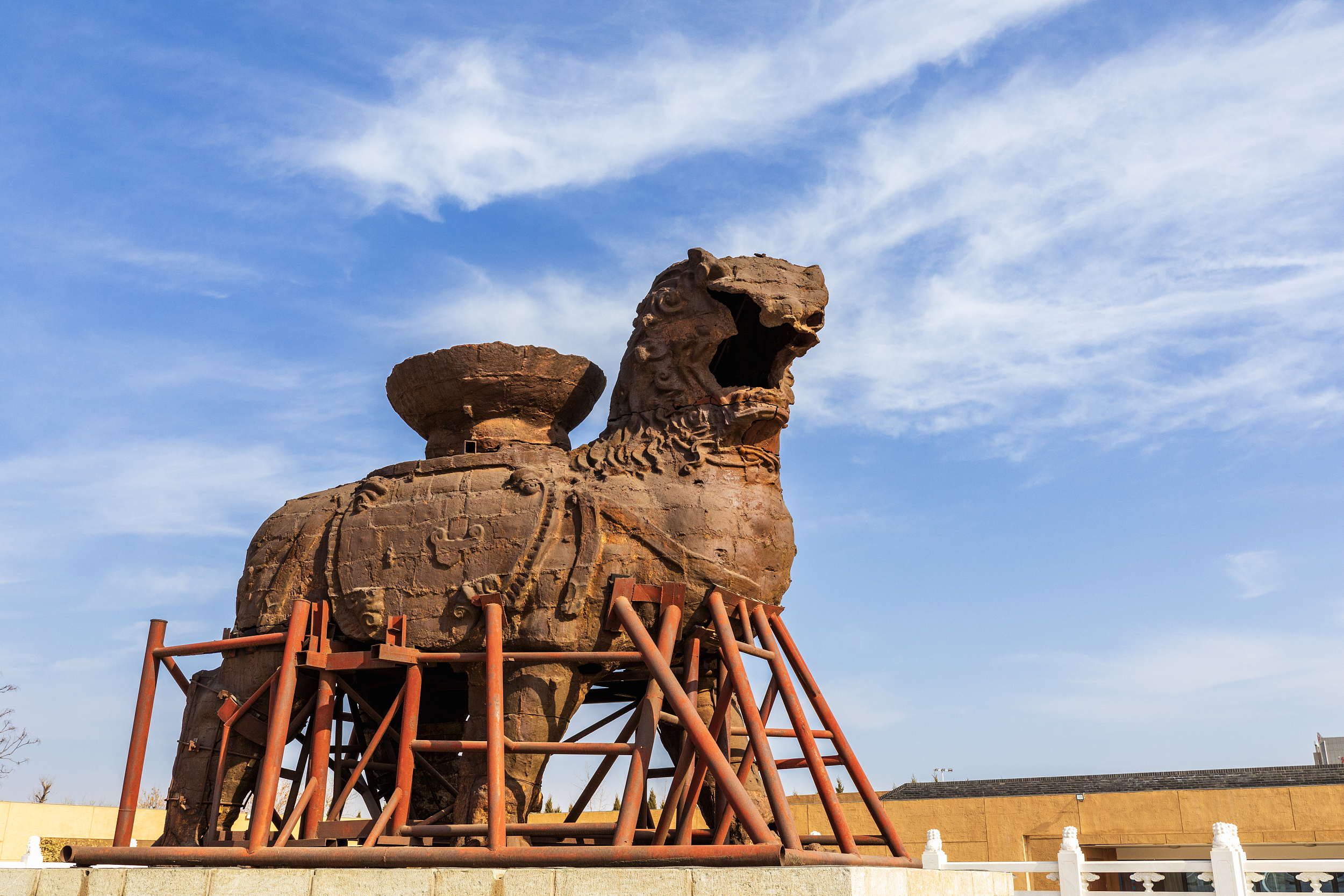
Cangzhou Iron Lion.?(PHOTO:?VCG)
By?Staff?Reporters
Nestled in the heart of the historical city of Cangzhou lies a remarkable artifact, the Cangzhou Iron Lion. It stands as a testament to the brilliance of ancient science and engineering.
Crafted in 953, the Cangzhou Iron Lion is 5.78 meters high, 5.34 meters long, and 3.17 meters wide, and regarded as one of the oldest and largest surviving iron-cast art treasures in China.
The iron lion's craftsmanship showcases the metallurgical skills of the ancient artisans. The statue was cast with the traditional Chinese "Clay Mold Casting Method." With this technique, the iron lion was cast in sections. Its belly is smooth and flat. However, the external part was made with clay molds ranging from 30 to 40 centimeters in size, and these molds were stacked and cast in layers. More than 600 blocks were used for the whole casting process. The intricate process of crafting involved meticulously arranging numerous external molds and integrating them into a complete sculpture. The skill and precision required for this method highlight the remarkable proficiency of ancient Chinese metallurgists.
The trio will conduct a series of experiments in fields such as life science, fluid physics, combustion science and materials science. Notably, this is the first time that fruit flies have been taken on a Chinese space mission as experimental subjects. What made scientists choose fruit flies? What experiment will they undergo?
